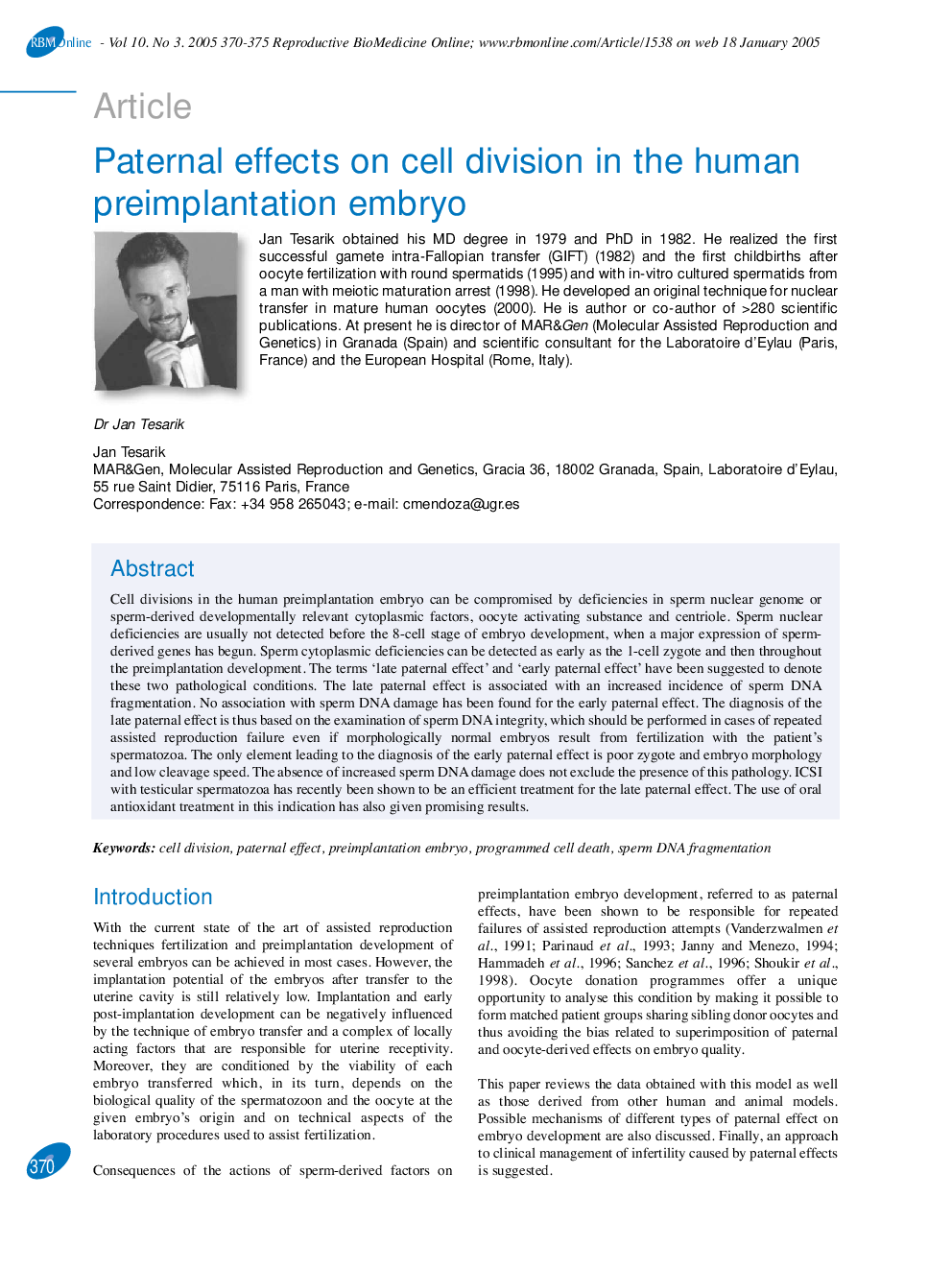| کد مقاله | کد نشریه | سال انتشار | مقاله انگلیسی | نسخه تمام متن |
|---|---|---|---|---|
| 9335375 | 1256880 | 2005 | 6 صفحه PDF | دانلود رایگان |
عنوان انگلیسی مقاله ISI
Paternal effects on cell division in the preimplantation embryo
دانلود مقاله + سفارش ترجمه
دانلود مقاله ISI انگلیسی
رایگان برای ایرانیان
کلمات کلیدی
موضوعات مرتبط
علوم پزشکی و سلامت
پزشکی و دندانپزشکی
زنان، زایمان و بهداشت زنان
پیش نمایش صفحه اول مقاله

چکیده انگلیسی
Cell divisions in the human preimplantation embryo can be compromised by deficiencies in sperm nuclear genome or sperm-derived developmentally relevant cytoplasmic factors, oocyte activating substance and centriole. Sperm nuclear deficiencies are usually not detected before the 8-cell stage of embryo development, when a major expression of sperm-derived genes has begun. Sperm cytoplasmic deficiencies can be detected as early as the 1-cell zygote and then throughout the preimplantation development. The terms 'late paternal effect' and 'early paternal effect' have been suggested to denote these two pathological conditions. The late paternal effect is associated with an increased incidence of sperm DNA fragmentation. No association with sperm DNA damage has been found for the early paternal effect. The diagnosis of the late paternal effect is thus based on the examination of sperm DNA integrity, which should be performed in cases of repeated assisted reproduction failure even if morphologically normal embryos result from fertilization with the patient's spermatozoa. The only element leading to the diagnosis of the early paternal effect is poor zygote and embryo morphology and low cleavage speed. The absence of increased sperm DNA damage does not exclude the presence of this pathology. ICSI with testicular spermatozoa has recently been shown to be an efficient treatment for the late paternal effect. The use of oral antioxidant treatment in this indication has also given promising results.
ناشر
Database: Elsevier - ScienceDirect (ساینس دایرکت)
Journal: Reproductive BioMedicine Online - Volume 10, Issue 3, 2005, Pages 370-375
Journal: Reproductive BioMedicine Online - Volume 10, Issue 3, 2005, Pages 370-375
نویسندگان
Jan Tesarik,